G-RRDB: An Effective THz Image-Denoising Model for Moldy Wheat
Abstract
1. Introduction
2. Materials and Methods
2.1. Experimental Equipment and Principles
2.2. Sample Preparation and THz Image Data Acquisition of Moldy Wheat
2.3. Related Technology Principles
2.3.1. Image Denoising
2.3.2. Residual Structure
2.3.3. Attentional Mechanisms
2.4. Principles of the Proposed Algorithm
2.4.1. G-RRDB Terahertz Image-Denoising Model
2.4.2. Densely Connected Residual Module
2.4.3. Large Kernel Attention Module Based on Ghost Convolutional Structure (Ghost-LKA)
2.4.4. Improved Attention Mechanism Module DAB

2.4.5. Loss Function
2.5. Evaluation Indicators
3. Results and Discussion
3.1. Model Training
3.2. Experimental Results and Discussion
3.3. Model Validation
3.4. Discussion
4. Conclusions
Author Contributions
Funding
Data Availability Statement
Conflicts of Interest
References
- Jia, X.X.; Ma, P.H.; Tarwa, K.; Wang, Q. Machine vision-based colorimetric sensor systems for food applications. J. Agric. Food Res. 2023, 11, 100503. [Google Scholar] [CrossRef]
- Gao, B.Y.; Lu, W.Y.; Jin, M.C.; Chen, Y.M. Non-targeted metabolomics of moldy wheat by ultra-performance liquid chromatography-quadrupole time-of-flight mass spectrometry. Front. Microbiol. 2023, 14, 1136516. [Google Scholar] [CrossRef] [PubMed]
- Wan, M.; Healy, J.J.; Sheridan, J.T. Terahertz phase imaging and biomedical applications. Opt. Laser Technol. 2020, 122, 105859. [Google Scholar] [CrossRef]
- Jiang, Y.Y.; Ge, H.Y.; Zhang, Y. Quantitative analysis of wheat maltose by combined terahertz spectroscopy and imaging based on Boosting ensemble learning. Food Chem. 2020, 307, 125533. [Google Scholar] [CrossRef] [PubMed]
- Wei, X.; Zheng, W.Q.; Zhu, S.P.; Zhou, S.L.; Wu, W.J.; Xie, Z.Y. Application of terahertz spectrum and interval partial least squares method in the identification of genetically modified soybeans. Spectrochim. Acta A 2020, 238, 118453. [Google Scholar] [CrossRef] [PubMed]
- Gu, H.Y.; Shi, C.J.; Wu, X.; Peng, Y. Molecular methylation detection based on terahertz metamaterial technology. Analyst 2020, 145, 6705–6712. [Google Scholar] [CrossRef] [PubMed]
- Yang, Z.B.; Tang, D.Y.; Hu, J.; Tang, M.J.; Zhang, M.K.; Cui, H.L.; Wang, L.H.; Chang, C.; Fan, C.H.; Li, J.; et al. Near-Field Nanoscopic Terahertz Imaging of Single Proteins. Small 2021, 17, 2005814. [Google Scholar] [CrossRef] [PubMed]
- Tzydynzhapov, G.; Gusikhin, P.; Muravev, V.; Dremin, A.; Nefyodov, Y.; Kukushkin, L. New real-time sub-terahertz security body scanner. J. Infrared Millim. Terahertz Waves 2020, 41, 632–641. [Google Scholar] [CrossRef]
- Samuel, D.; Shang, L.P.; Hu, D.; Justice, O.; Appiah, E.; Etse, B.; Liu, Q.C. Denoising Terahertz Image Using Non-Linear Filters. Comput. Eng. Intell. Syst. 2021, 12, 2222–2863. [Google Scholar]
- Jiang, Y.Y.; Wang, F.; Ge, H.Y.; Li, G.M.; Chen, X.Y.; Li, L.; Lv, M.; Zhang, Y. Identification of unsound grains in wheat using deep learning and terahertz spectral imaging technology. Agronomy 2022, 12, 1093. [Google Scholar] [CrossRef]
- Dutta, B.; Root, K.; Ullmann, I.; Wagner, F.; Mayr, M.; Seuret, M.; Stromer, D.; Christlein, V.; Schur, J.; Maier, A.; et al. Deep learning for terahertz image denoising in nondestructive historical document analysis. Sci. Rep. 2022, 12, 22554. [Google Scholar] [CrossRef] [PubMed]
- Wang, X.F.; Yu, K.; Wu, S.X.; Gu, J.J.; Liu, Y.H.; Dong, C.; Qiao, Y.; Chen, C.L. Esrgan: Enhanced super-resolution generative adversarial networks. In Proceedings of the European Conference on Computer Vision, Munich, Germany, 8–14 September 2018. [Google Scholar]
- Guo, M.H.; Lu, C.Z.; Liu, Z.N.; Cheng, M.M.; Hu, S.M. Visual attention network. arXiv 2022, arXiv:2202.09741. [Google Scholar]
- Hu, J.; Shen, L.; Sun, G. Squeeze-and-excitation networks. In Proceedings of the IEEE Conference on Computer Vision and Pattern Recognition, Salt Lake City, UT, USA, 18–22 June 2018; pp. 7132–7141. [Google Scholar]
- Fan, L.W.; Zhang, F.; Fan, H.; Zhang, C.M. Brief review of image denoising techniques. VCIBA 2019, 2, 7. [Google Scholar] [CrossRef] [PubMed]
- Zhang, K.; Zuo, W.M.; Chen, Y.J.; Meng, D.Y.; Zhang, L. Beyond a gaussian denoiser: Residual learning of deep cnn for image denoising. IEEE Trans. Image Process. 2017, 26, 3142–3155. [Google Scholar] [CrossRef] [PubMed]
- Zhang, K.; Zuo, W.; Zhang, L. FFDNet: Toward a fast and flexible solution for CNN-based image denoising. IEEE Trans. Image Process. 2018, 27, 4608–4622. [Google Scholar] [CrossRef] [PubMed]
- Guo, S.; Yan, Z.F.; Zhang, K.; Zuo, W.M.; Zhang, L. Toward convolutional blind denoising of real photographs. In Proceedings of the IEEE/CVF Conference on Computer Vision and Pattern Recognition, Long Beach Convention & Entertainment Center, Los Angeles, CA, USA, 15–21 June 2019; pp. 1712–1722. [Google Scholar]
- He, K.M.; Zhang, X.Y.; Ren, S.Q.; Sun, J. Deep residual learning for image recognition. In Proceedings of the IEEE Conference on Computer Vision and Pattern Recognition, Las Vigas, NV, USA, 27–30 June 2016; pp. 770–778. [Google Scholar]
- Maas, A.L.; Hannun, A.Y.; Ng, A.Y. Rectifier nonlinearities improve neural network acoustic models. In Proceedings of the International Conference on Machine Learning, Atlanta, GA, USA, 16–21 June 2013. [Google Scholar]
- Vaswani, A.; Shazeer, N.; Parmar, N.; Uszkoreit, J.; Jones, L.; Gomez, A.N.; Kaiser, L.; Polosukhin, I. Attention is all you need. In Proceedings of the Neural Information Processing Systems, Long Beach, CA, USA, 3–9 December 2017. [Google Scholar]
- Dabov, K.; Foi, A.; Katkovnik, V.; Egiazarian, K. Image denoising by sparse 3-D transform-domain collaborative filtering. IEEE Trans. Image Process. 2007, 16, 2080–2095. [Google Scholar] [CrossRef] [PubMed]
- Liu, Z.; Lin, W.J.; Li, X.P.; Rao, Q.; Jiang, T.; Han, M.Y.; Fan, H.Q.; Sun, J.; Liu, S.C. ADNet: Attention-guided deformable convolutional network for high dynamic range imaging. In Proceedings of the IEEE/CVF Conference on Computer Vision and Pattern Recognition, Online, 19–25 June 2021; pp. 463–470. [Google Scholar]
- Simonyan, K.; Zisserman, A. Very deep convolutional networks for large-scale image recognition. arXiv 2014, arXiv:14091556. [Google Scholar]
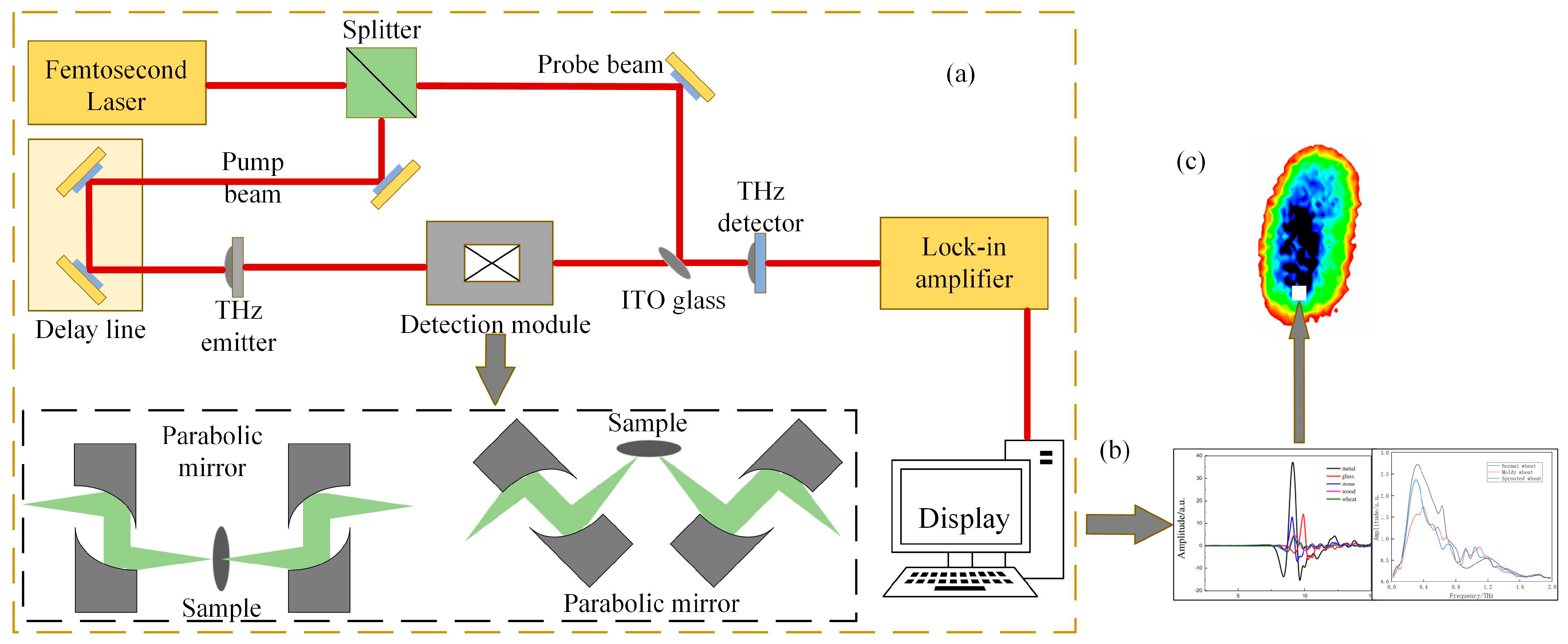


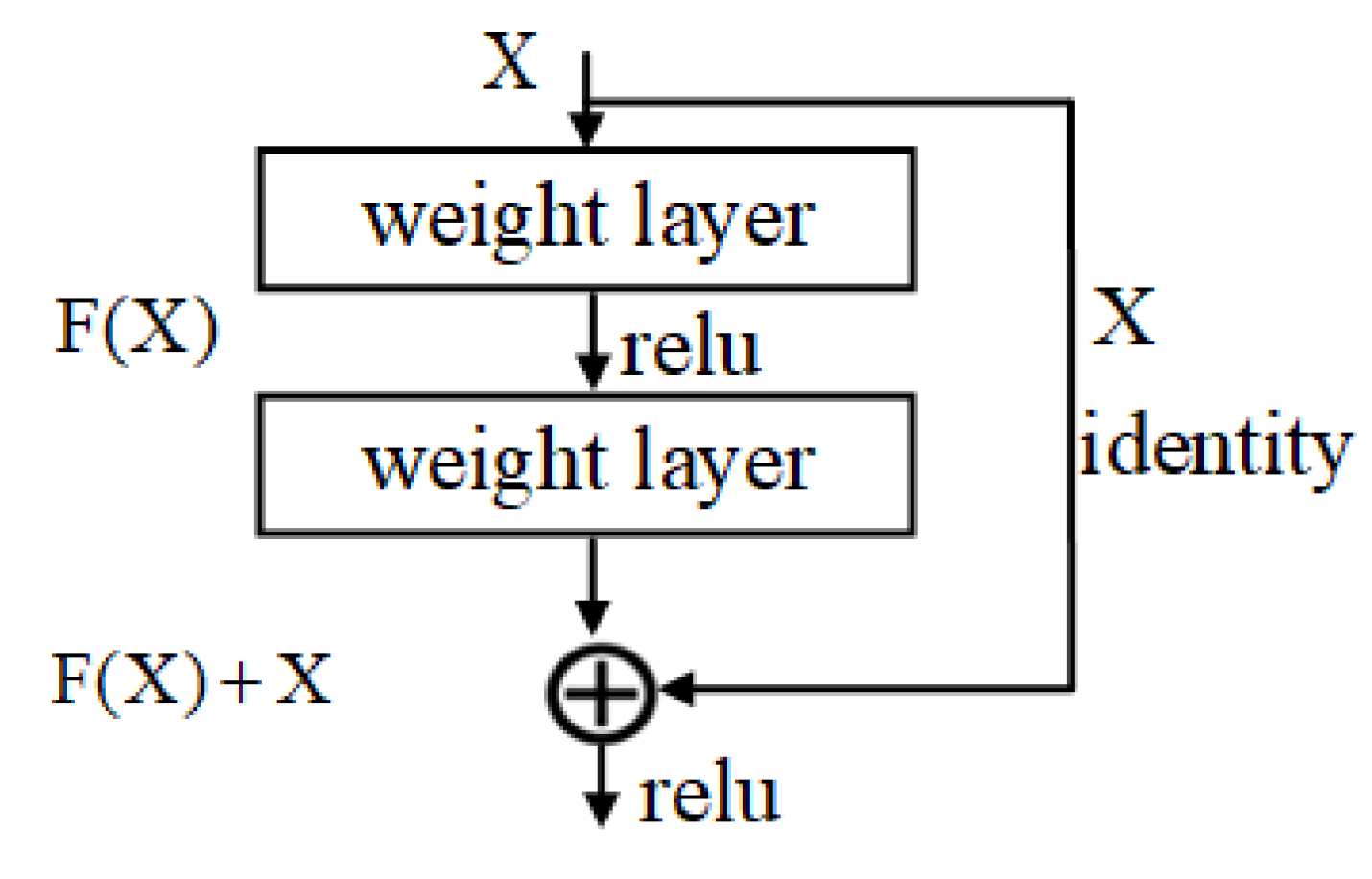
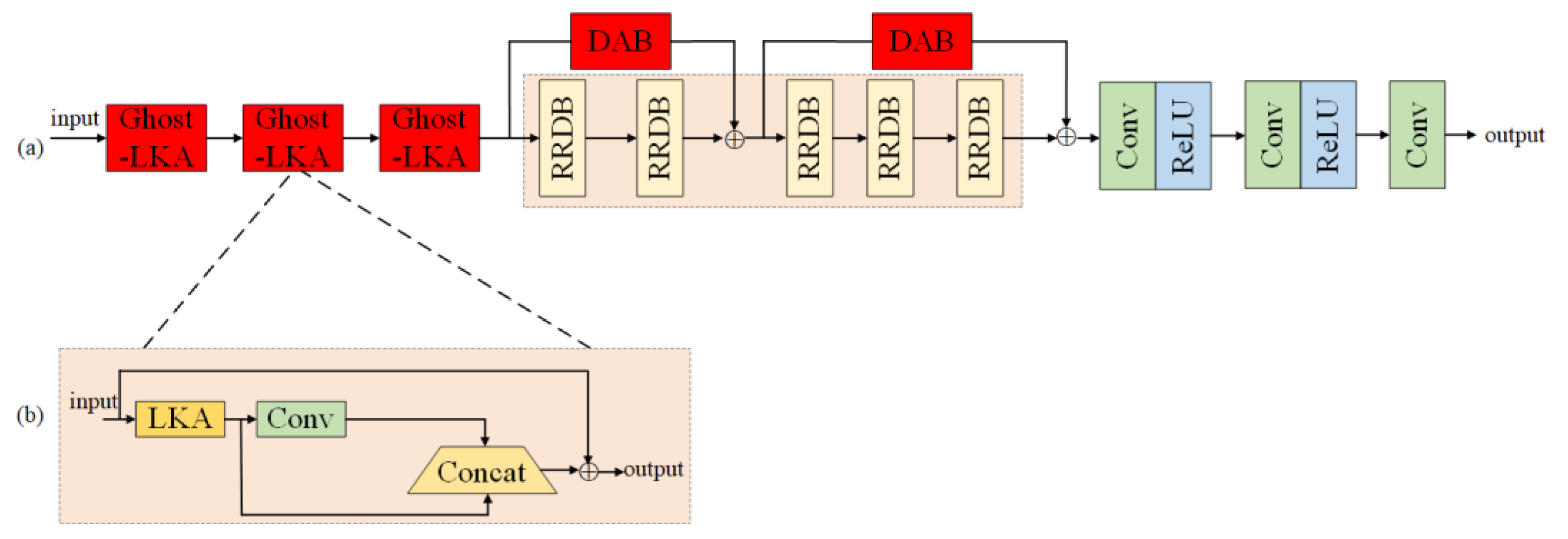
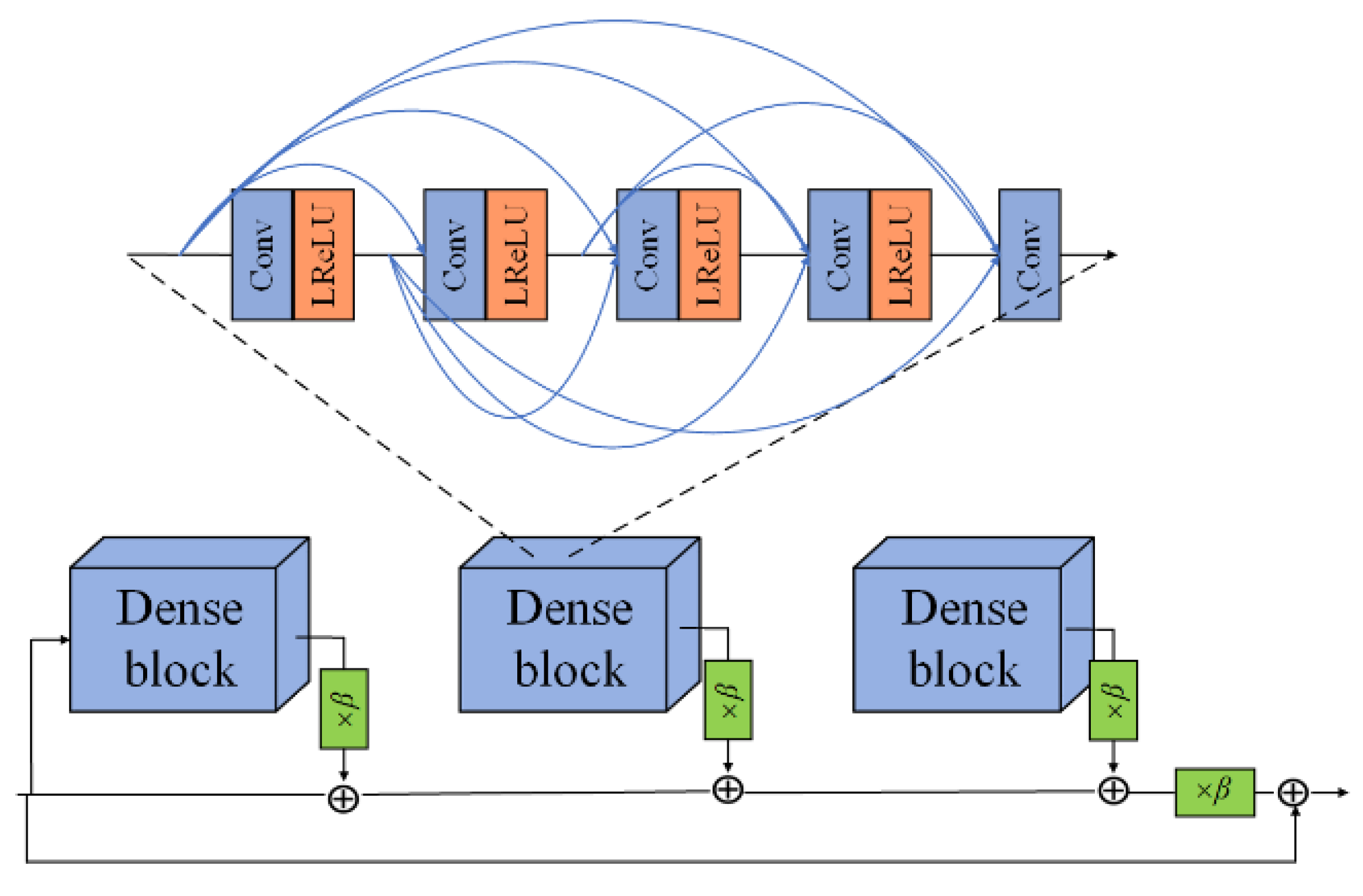

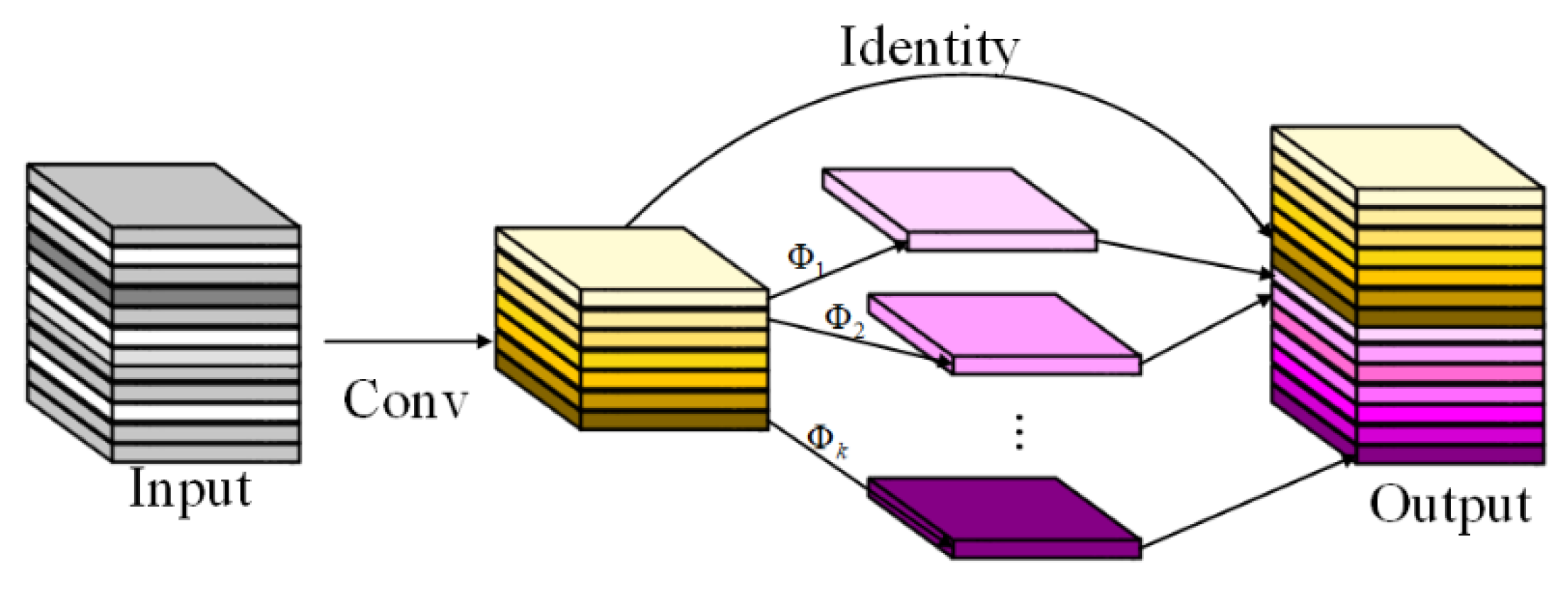


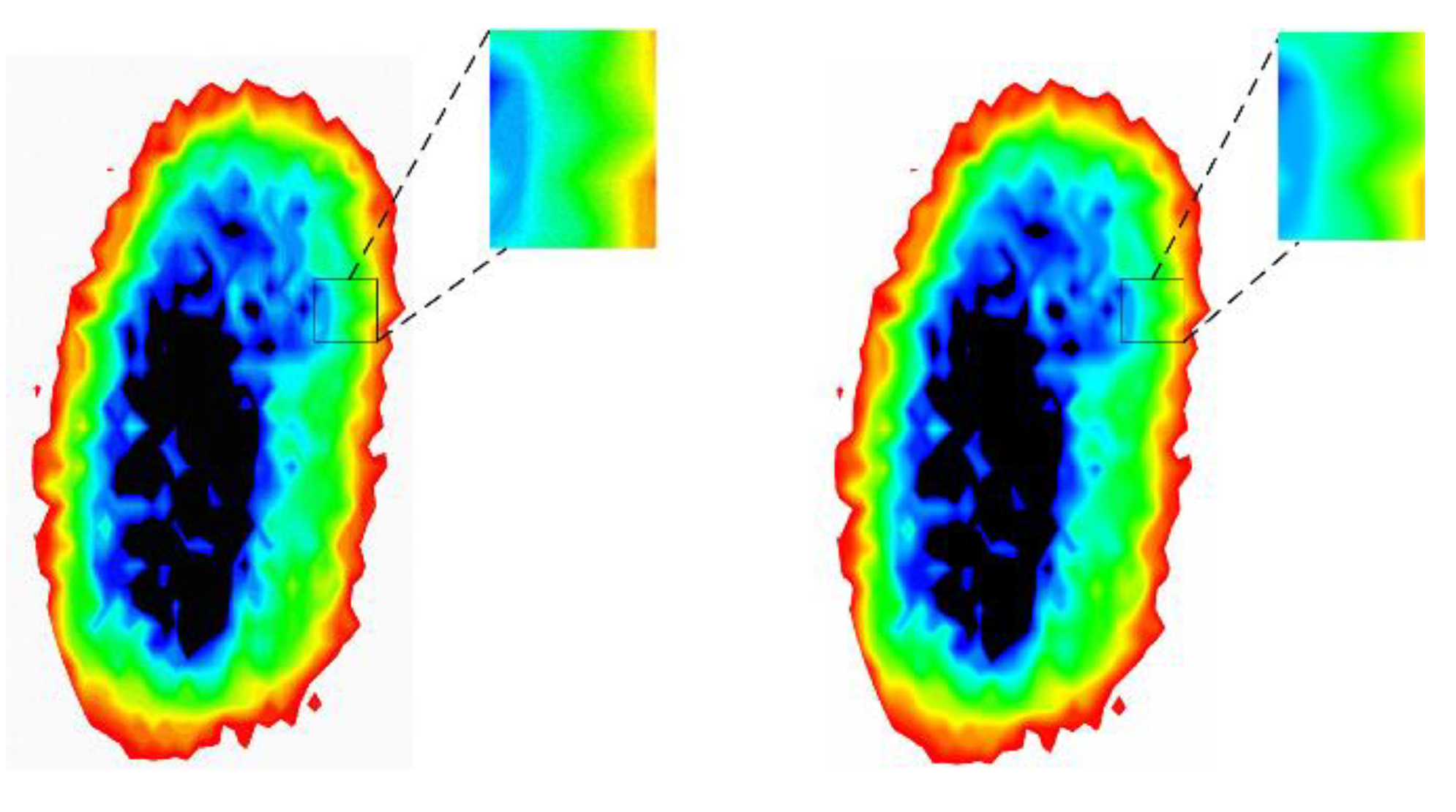
| Algorithm | BM3D | ADNet | DnCNN | CBDNet | Baseline | Baseline + DAB | G-RRDB |
|---|---|---|---|---|---|---|---|
| Species | |||||||
| Normal |  |  |  |  |  |  |  |
| Slightly moldy |  |  |  |  |  |  |  |
| Moderately moldy |  |  |  |  |  |  |  |
| Seriously moldy |  |  |  |  |  |  |  |
| Species | Normal | Slightly Moldy | Moderately Moldy | Seriously Moldy | ||||
|---|---|---|---|---|---|---|---|---|
| Algorithm | PSNR/dB | SSIM | PSNR/dB | SSIM | PSNR/dB | SSIM | PSNR/dB | SSIM |
| BM3D | 32.94 | 0.94 | 32.78 | 0.93 | 32.46 | 0.93 | 32.92 | 0.94 |
| ADNet | 34.32 | 0.95 | 34.80 | 0.96 | 35.04 | 0.96 | 34.77 | 0.96 |
| CBDNet | 34.41 | 0.95 | 35.05 | 0.96 | 35.78 | 0.97 | 35.11 | 0.96 |
| DnCNN | 33.57 | 0.96 | 34.19 | 0.96 | 34.79 | 0.97 | 34.22 | 0.96 |
| Baseline | 34.86 | 0.96 | 35.57 | 0.97 | 36.13 | 0.98 | 35.63 | 0.97 |
| Baseline + DAB | 35.23 | 0.97 | 35.96 | 0.98 | 36.59 | 0.98 | 36.02 | 0.98 |
| G-RRDB | 35.32 | 0.97 | 35.98 | 0.98 | 36.62 | 0.98 | 36.21 | 0.98 |
| Images | Model | 20 dB | 30 dB | 40 dB | 50 dB | ||||
|---|---|---|---|---|---|---|---|---|---|
| PSNR/dB | SSIM | PSNR/dB | SSIM | PSNR/dB | SSIM | PSNR/dB | SSIM | ||
| Seriously moldy | BM3D | 31.43 | 0.93 | 31.24 | 0.93 | 30.95 | 0.92 | 30.55 | 0.90 |
| ADNet | 34.33 | 0.95 | 33.76 | 0.94 | 33.07 | 0.91 | 32.22 | 0.94 | |
| CBDNet | 34.40 | 0.96 | 34.28 | 0.96 | 34.01 | 0.96 | 33.82 | 0.95 | |
| DnCNN | 34.17 | 0.96 | 34.02 | 0.96 | 33.78 | 0.96 | 33.44 | 0.95 | |
| Baseline | 35.49 | 0.97 | 35.26 | 0.97 | 34.96 | 0.97 | 34.60 | 0.96 | |
| Baseline + DAB | 35.85 | 0.97 | 35.59 | 0.97 | 35.23 | 0.97 | 34.80 | 0.97 | |
| G-RRDB | 35.86 | 0.98 | 35.60 | 0.98 | 35.26 | 0.97 | 35.17 | 0.97 | |
| Prediction Results (%) | |||
|---|---|---|---|
| Images | Baseline | Baseline + DAB | G-RRDB |
| Normal | 91.1 | 92.6 | 92.8 |
| Slightly moldy | 90.2 | 91.0 | 91.6 |
| Moderately moldy | 90.3 | 92.2 | 92.5 |
| Seriously moldy | 90.2 | 91.8 | 92.2 |
Disclaimer/Publisher’s Note: The statements, opinions and data contained in all publications are solely those of the individual author(s) and contributor(s) and not of MDPI and/or the editor(s). MDPI and/or the editor(s) disclaim responsibility for any injury to people or property resulting from any ideas, methods, instructions or products referred to in the content. |
© 2023 by the authors. Licensee MDPI, Basel, Switzerland. This article is an open access article distributed under the terms and conditions of the Creative Commons Attribution (CC BY) license (https://creativecommons.org/licenses/by/4.0/).
Share and Cite
Jiang, Y.; Chen, X.; Ge, H.; Jiang, M.; Wen, X. G-RRDB: An Effective THz Image-Denoising Model for Moldy Wheat. Foods 2023, 12, 2819. https://doi.org/10.3390/foods12152819
Jiang Y, Chen X, Ge H, Jiang M, Wen X. G-RRDB: An Effective THz Image-Denoising Model for Moldy Wheat. Foods. 2023; 12(15):2819. https://doi.org/10.3390/foods12152819
Chicago/Turabian StyleJiang, Yuying, Xinyu Chen, Hongyi Ge, Mengdie Jiang, and Xixi Wen. 2023. "G-RRDB: An Effective THz Image-Denoising Model for Moldy Wheat" Foods 12, no. 15: 2819. https://doi.org/10.3390/foods12152819
APA StyleJiang, Y., Chen, X., Ge, H., Jiang, M., & Wen, X. (2023). G-RRDB: An Effective THz Image-Denoising Model for Moldy Wheat. Foods, 12(15), 2819. https://doi.org/10.3390/foods12152819






